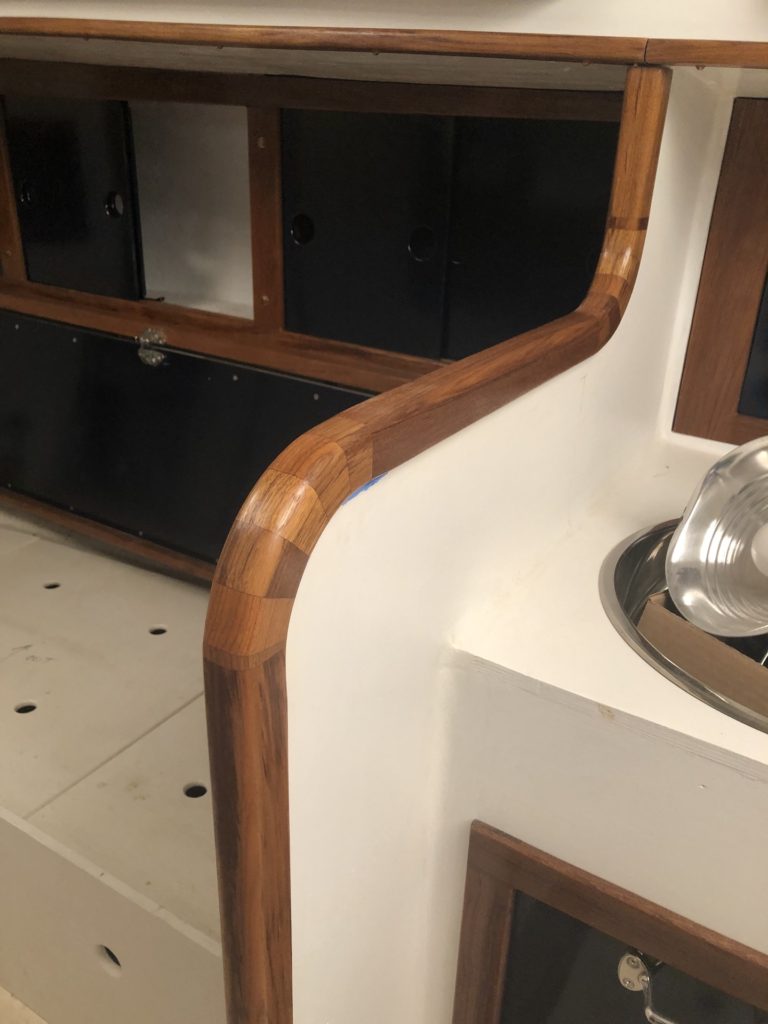6/25/21: Miscellaneous
The main cabin will have four dome lights on the ceiling. Much more about their placement and installation later on. In the mean time, I decided to hide the wiring under teak strips, and mount the lights on circular teak pads that serve a similar purpose. The photos below should be self-explanatory, for the most part.
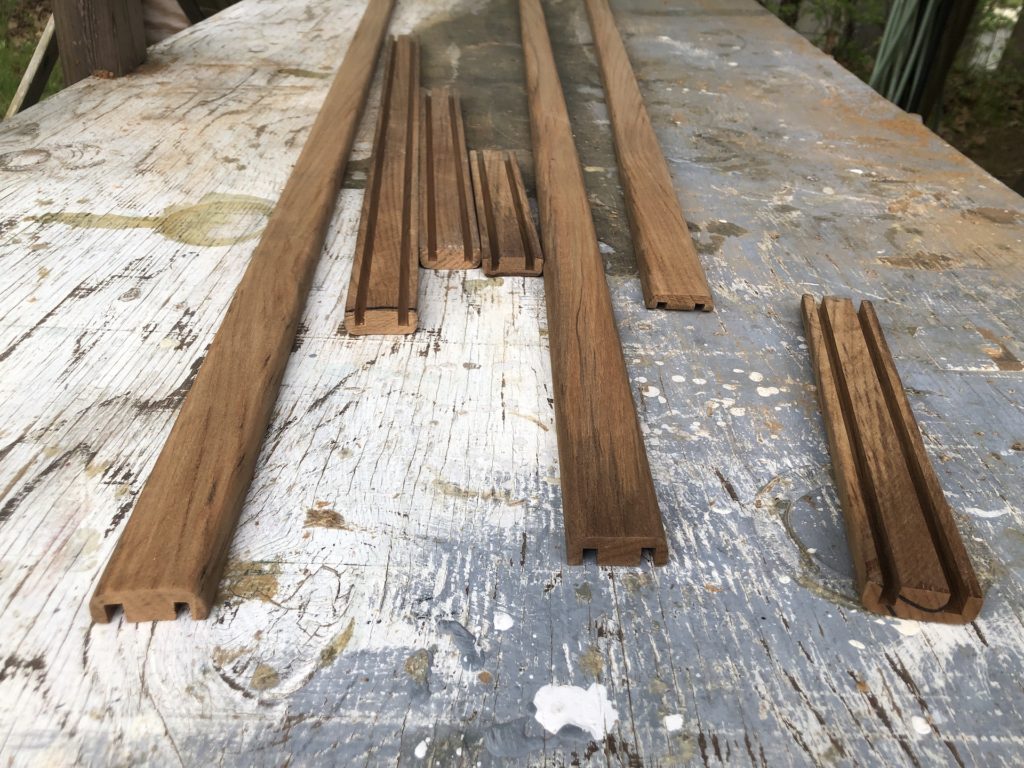
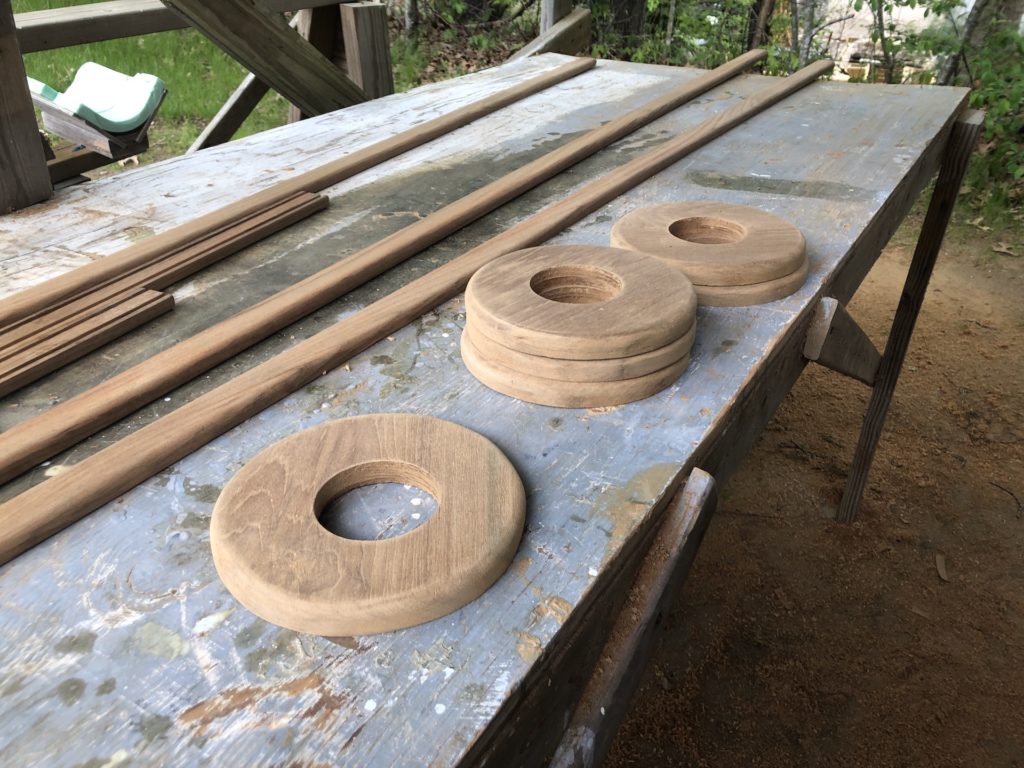
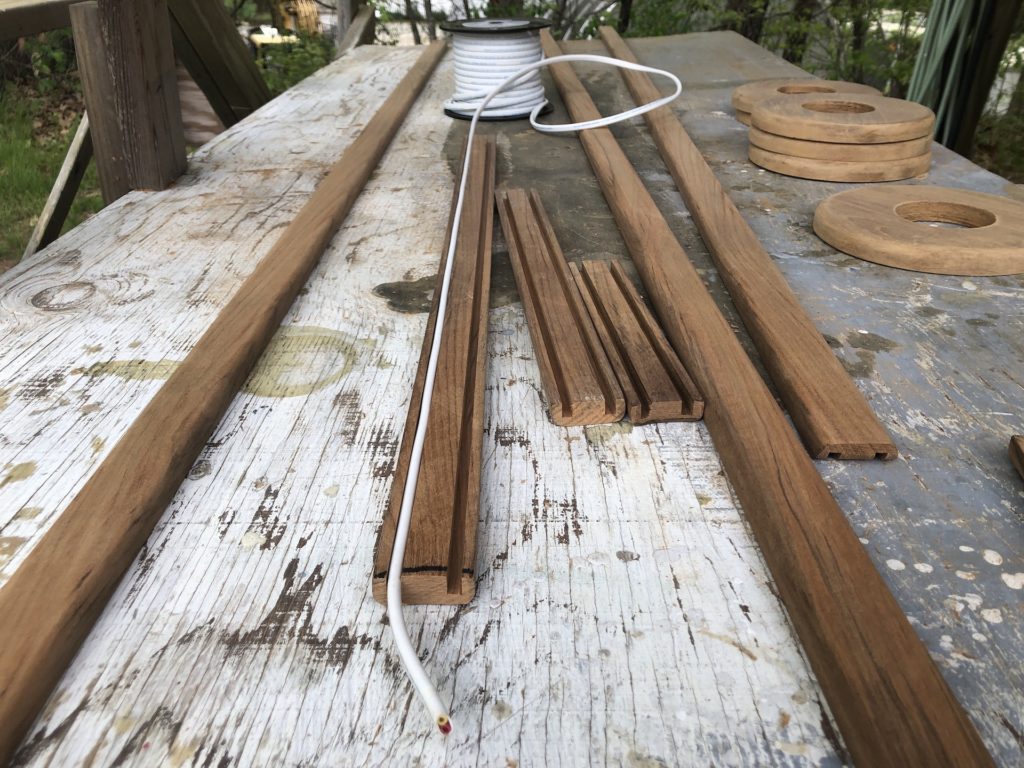
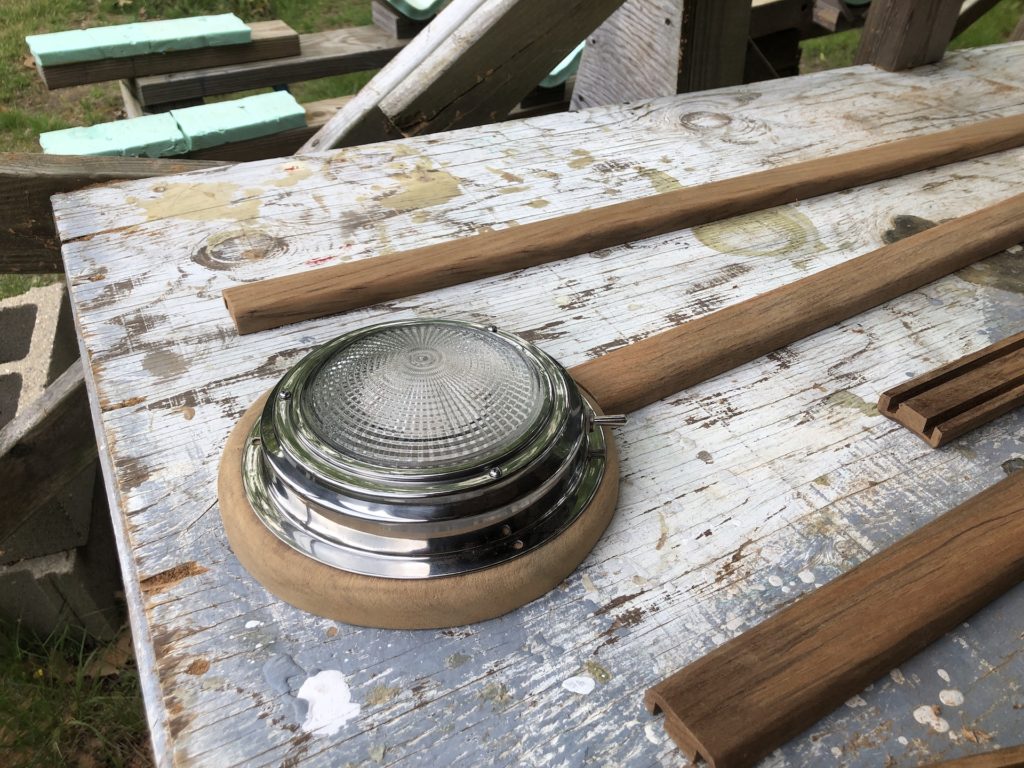
Second of three coats of varnish:
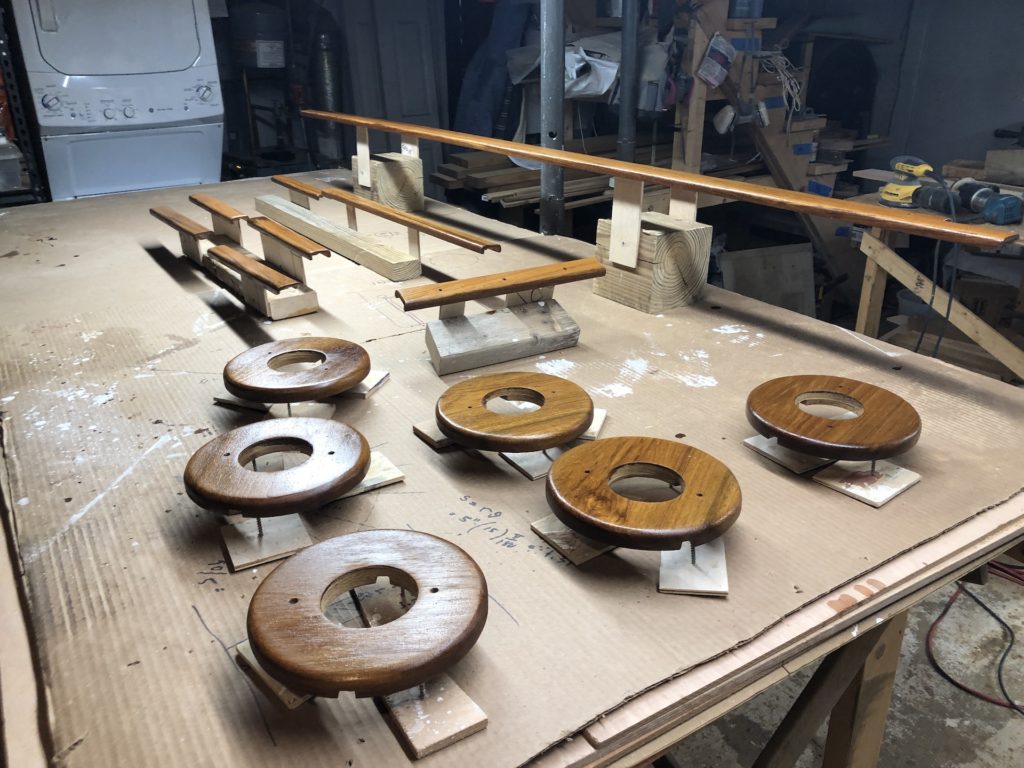
New stanchions and bases (16 each) need installation. The first task was to identify the locations of the original stanchions, which presented a non-trivial challenge due to many of the original holes having been filled. A combination of studying old photographs, finding evidence of original installations under the deck, and approximations yielded the locations for the new installation.

The original stanchion bases have a 5-6 degree list, whose purpose is to correct for camber in the deck. The new bases have a 6-degree list.
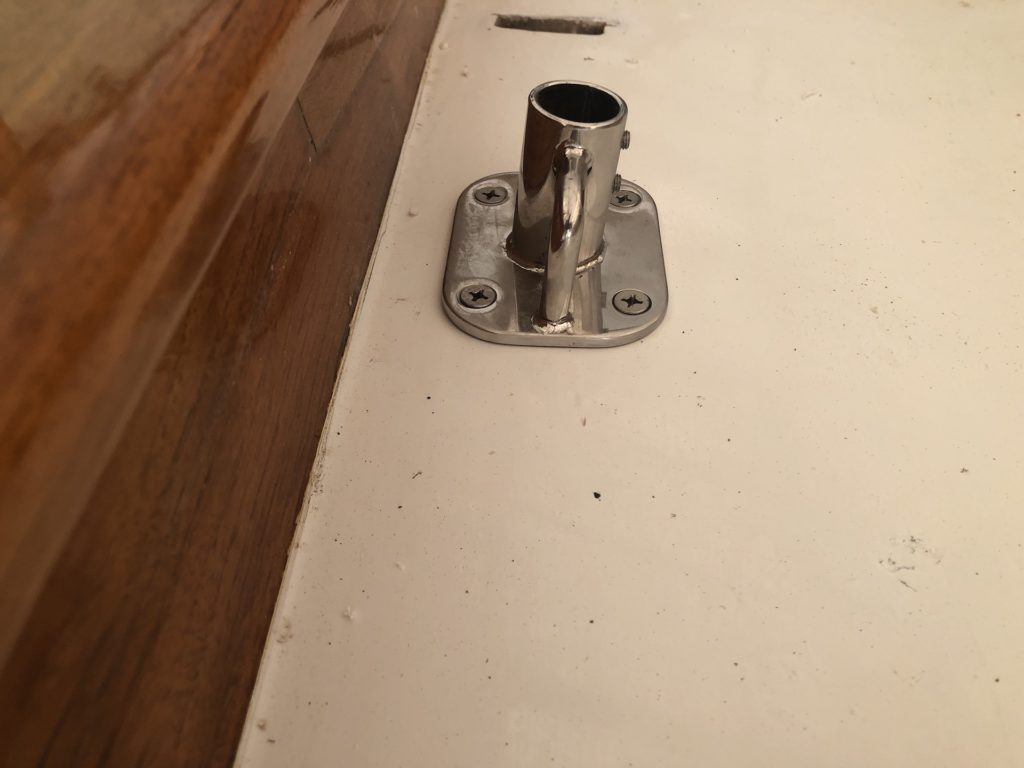
A dry fit of the bases and stanchions revealed that additional corrections to the angle would be necessary in order that the trajectory of the lifelines would be fair. I decided, then, to mount the bases on teak pads that could be cut to add or subtract to the angle of the base.
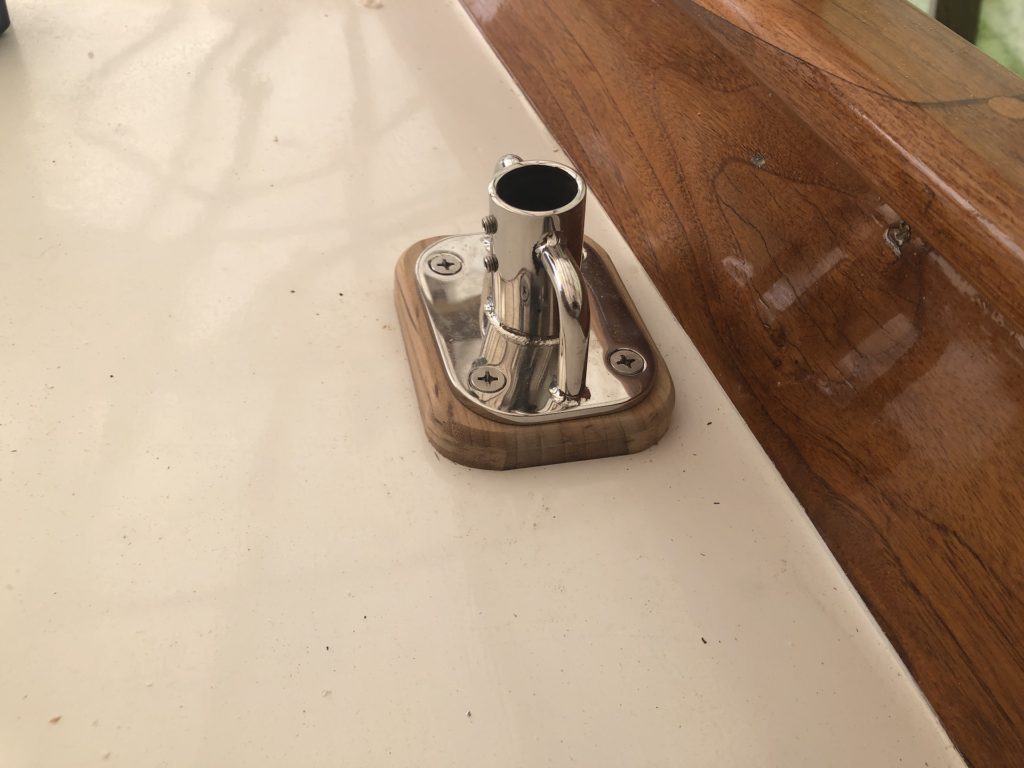
There were 16 pads…
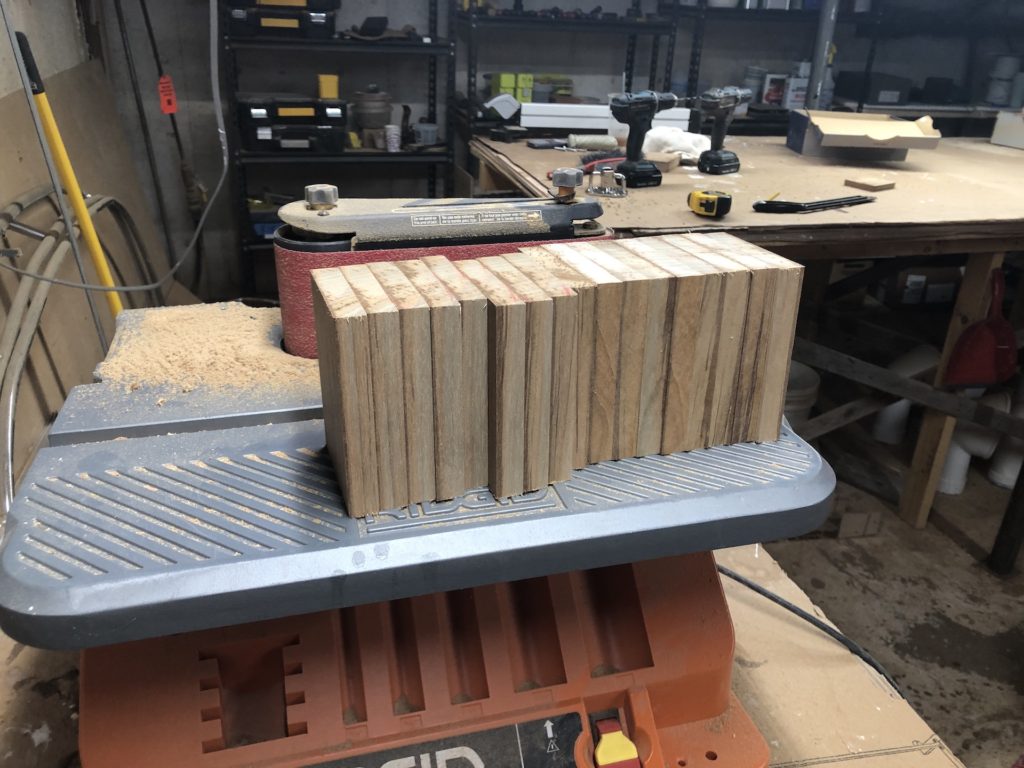
…and they look just fine.
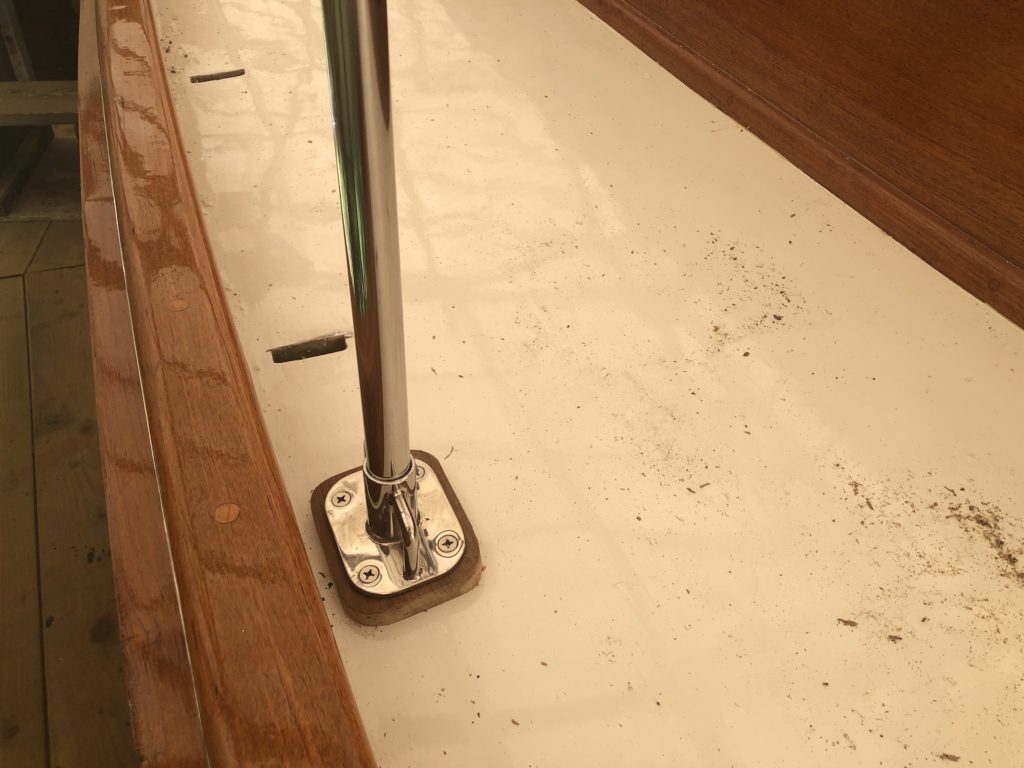
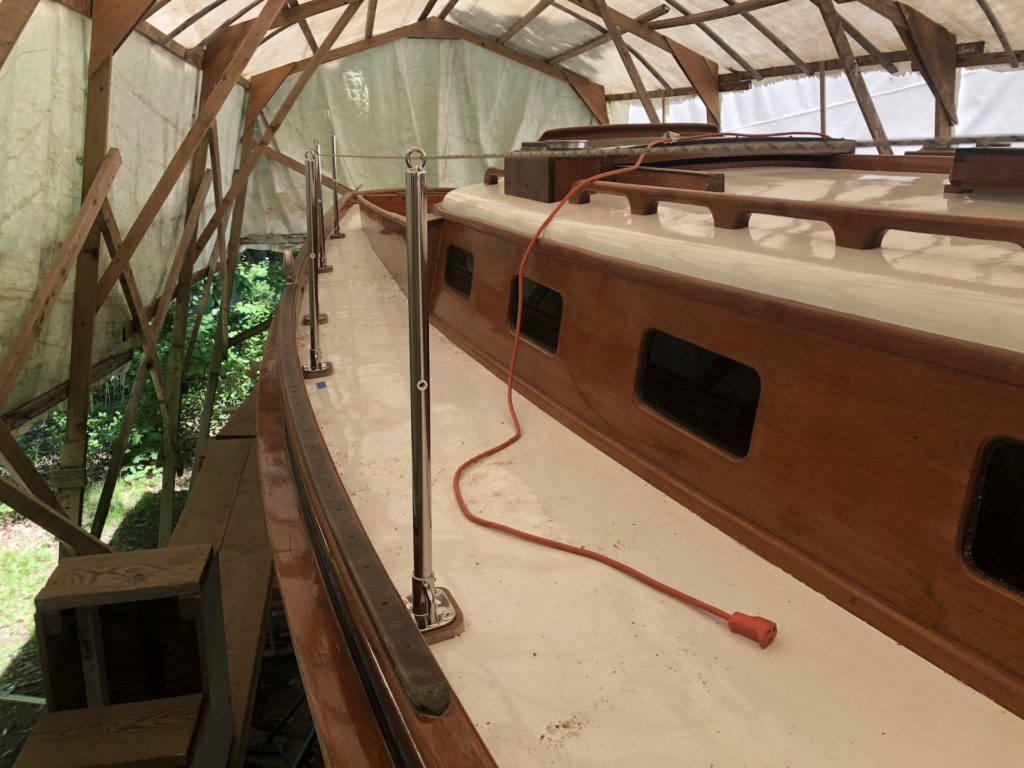
In the end, four base pads (two on each side) required adjusting.
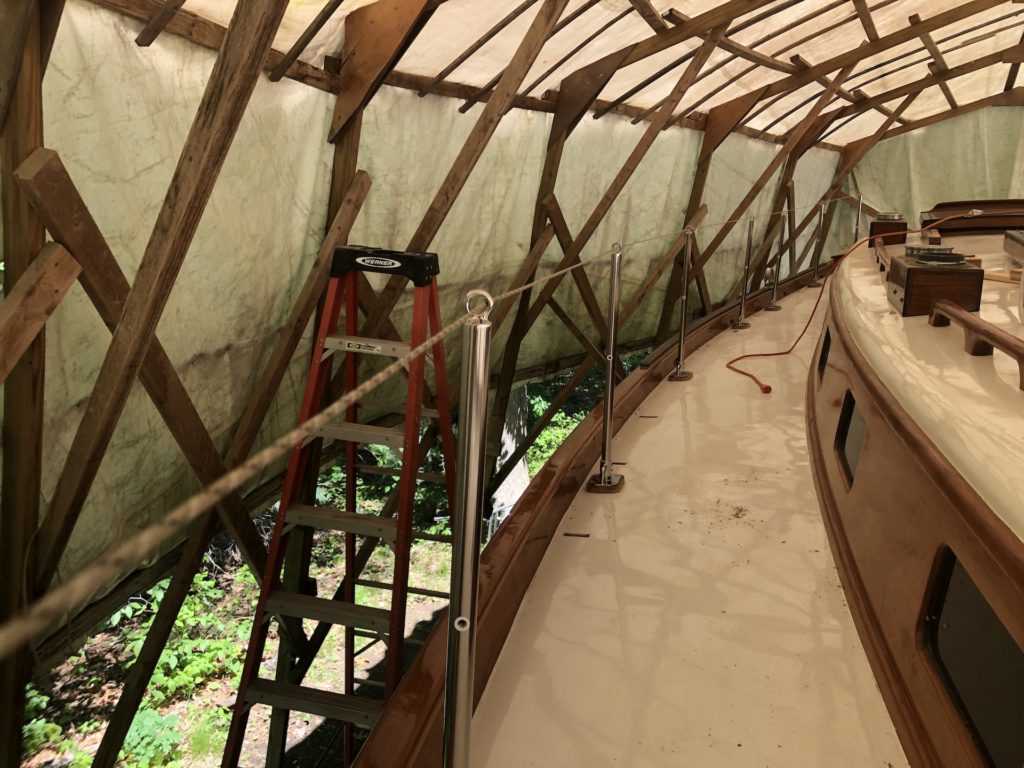
Upon the recommendation of some online discussion forums, I decided to bed the bases and pads in marine-grade butyl.
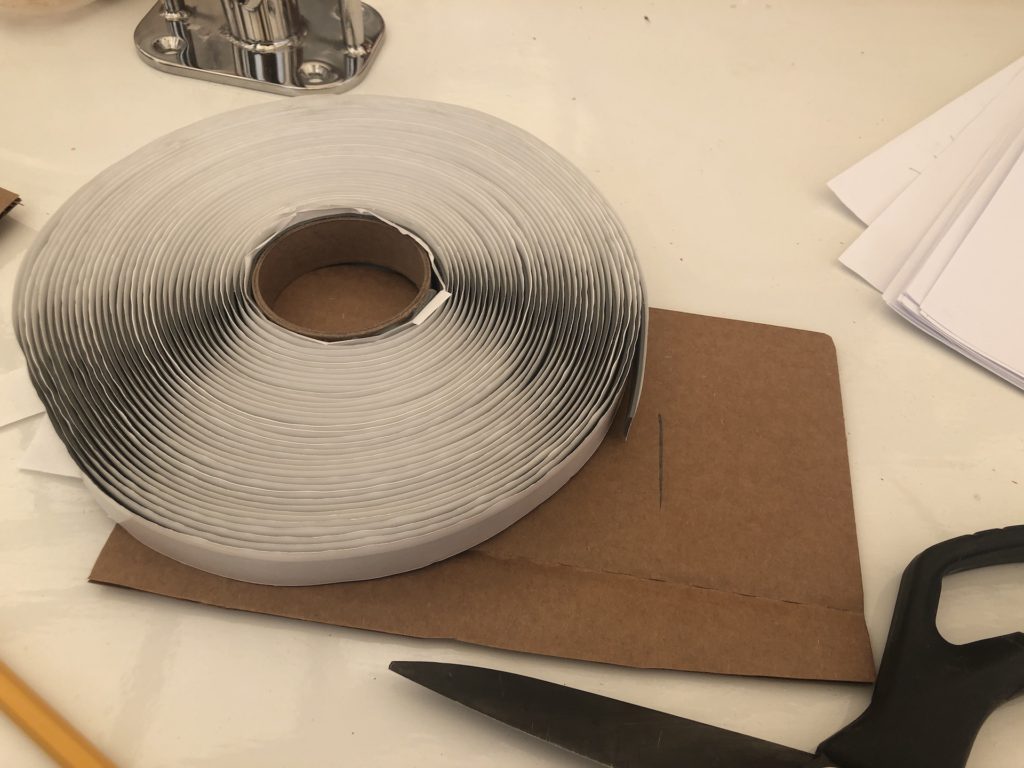
Butyl is a very sticky, putty-like substance that provides a very good watertight seal. The advantage of butyl, over traditional sealants, is that it can be easily removed when rebedding, and supposedly has a very long life.
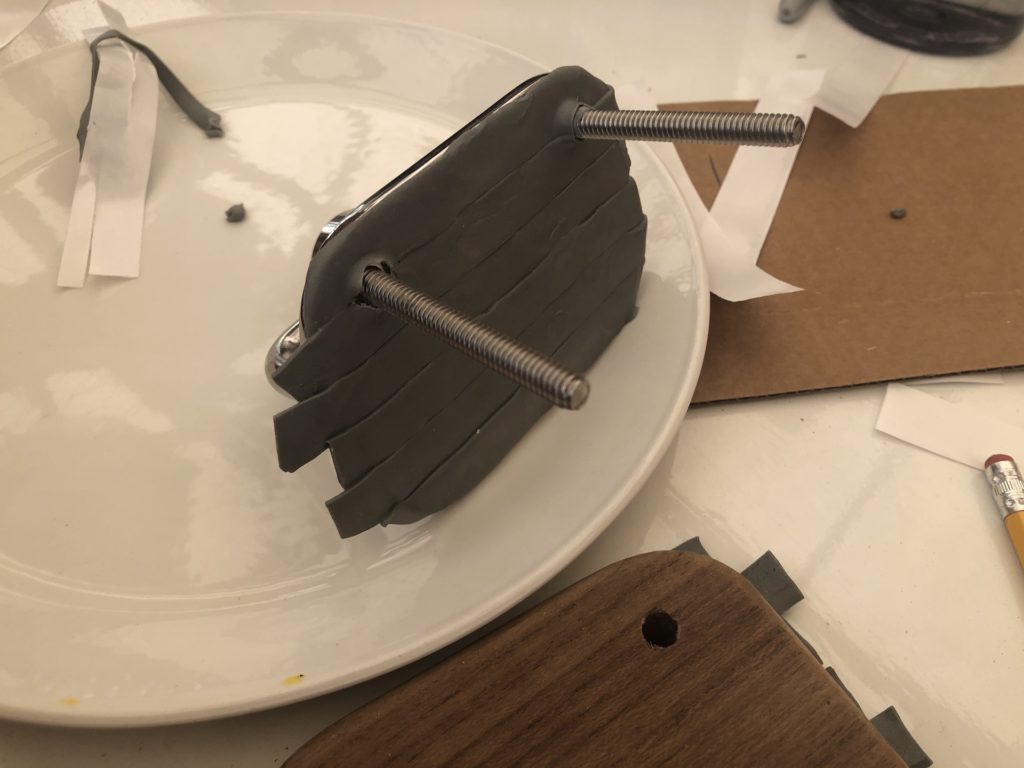
Work began on aft-deck cleats and chocks.
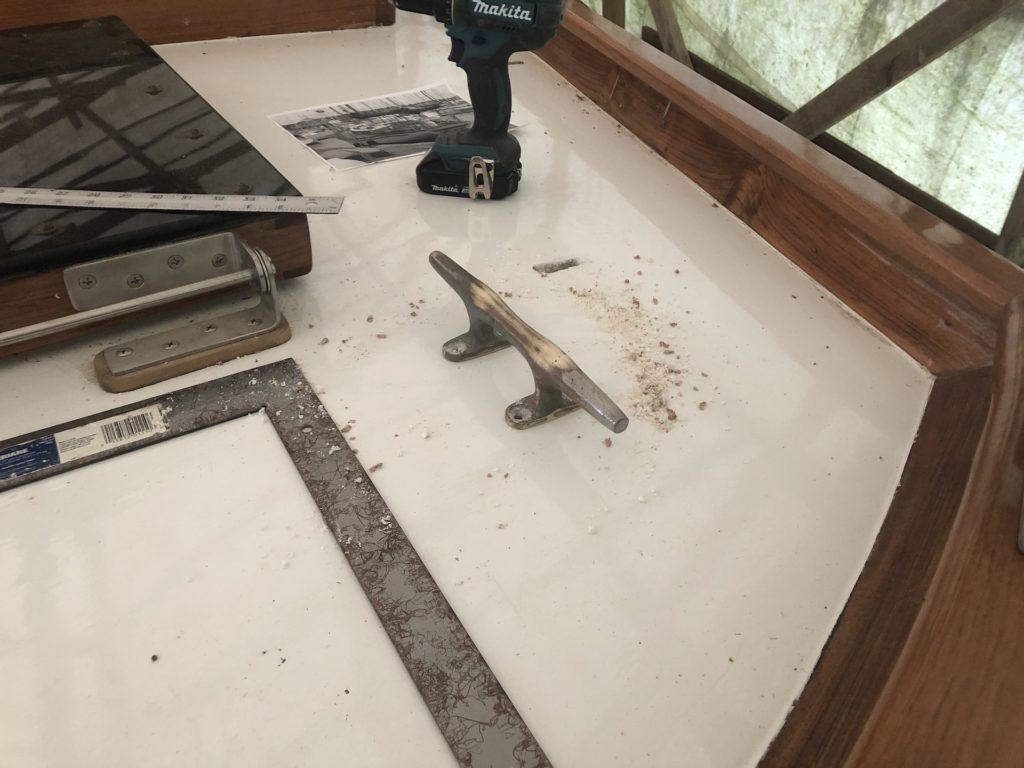
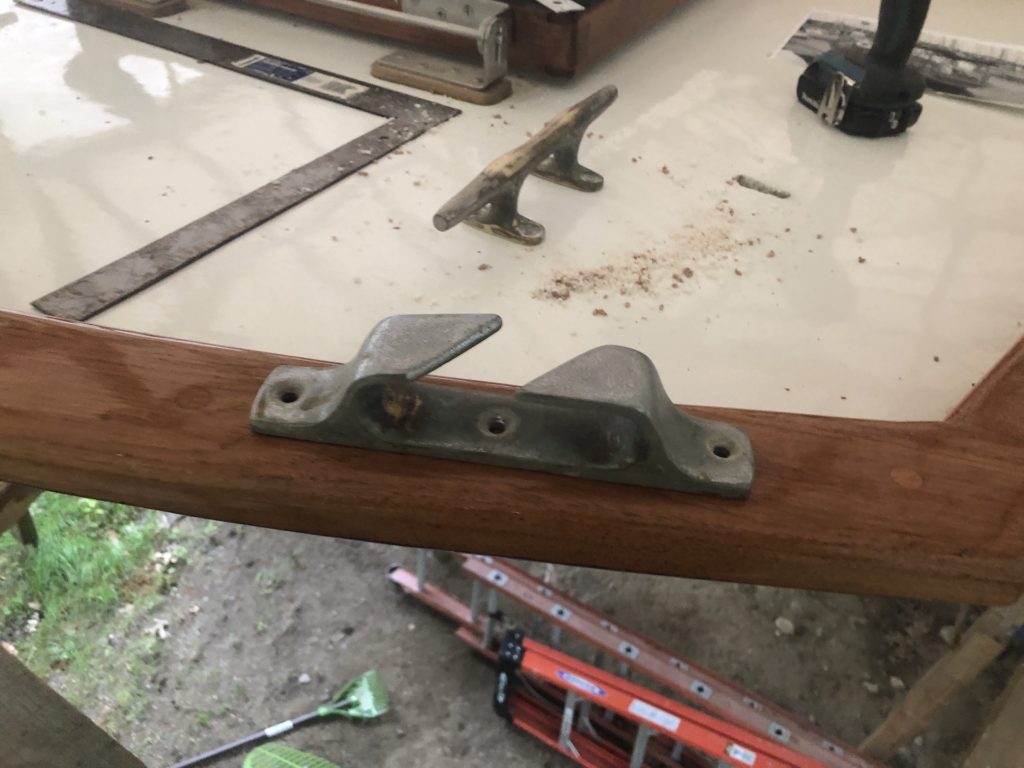
In the cabin, I needed special fiddles that serve the following dual purpose: (1) Keep the forward-cabin cushions from moving and (2) provide a seat for a filler-board, on which a filler cushion can sit, in the case that I want to make a full bed in the forward cabin (rare, but I want the option).
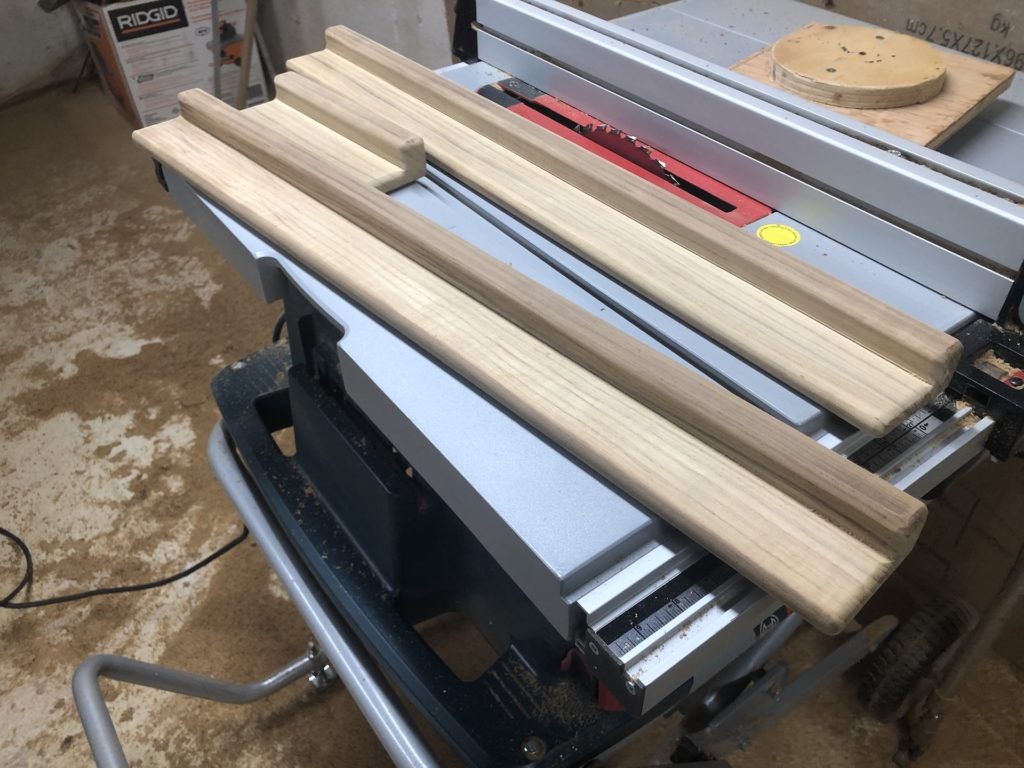
Here they are, installed, but not yet bunged.
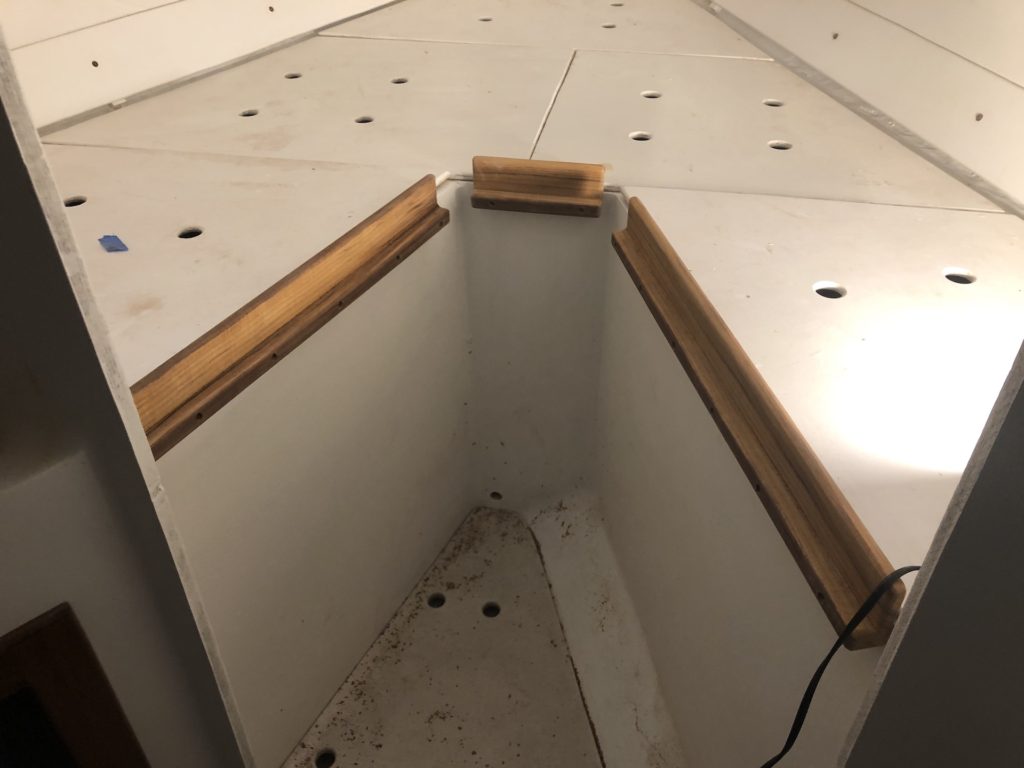
Here I’m making a pattern for the filler board, relying on the tried-and-true method using strips of cheap 1/8″ plywood and hot glue.
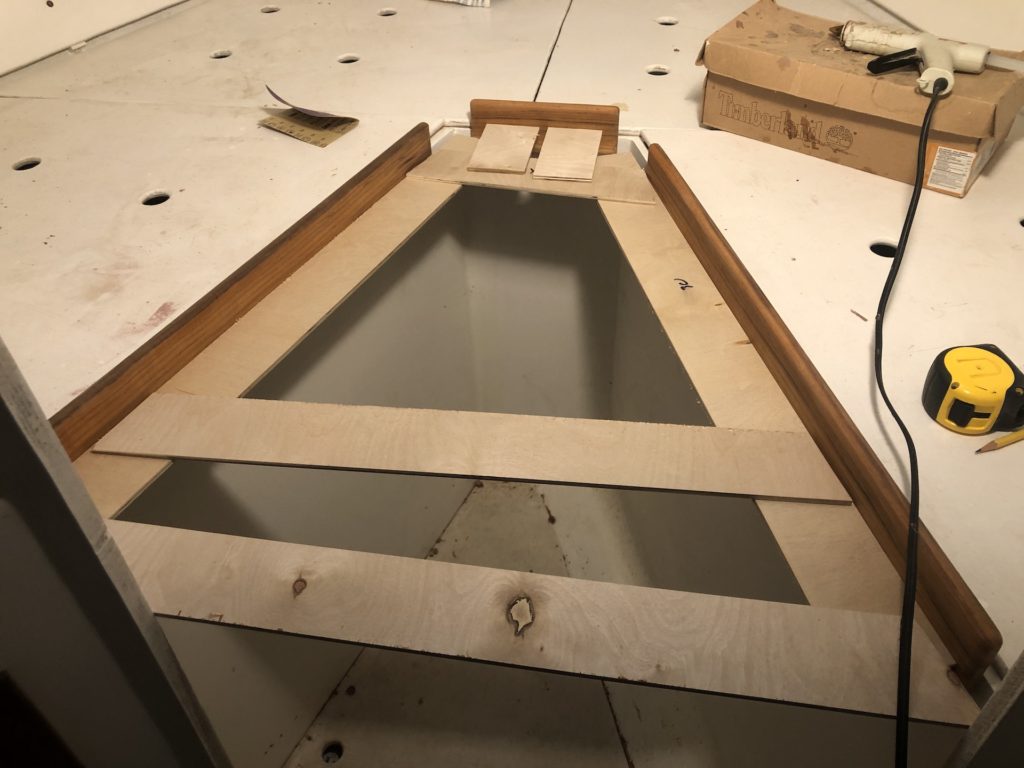
The bulkhead molding in the main cabin received its third and final coat of varnish, and the tape was pulled (most of it anyway).
